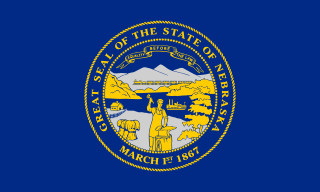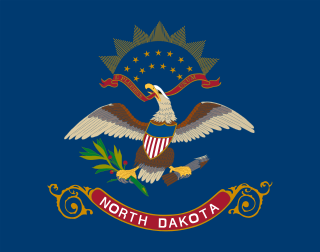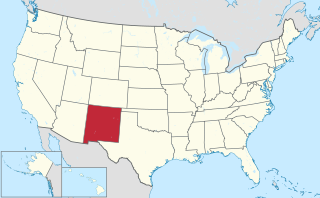
The Territory of Louisiana or Louisiana Territory was an organized incorporated territory of the United States that existed from July 4, 1805, until June 4, 1812, when it was renamed the Missouri Territory. The territory was formed out of the District of Louisiana, which consisted of the portion of the Louisiana Purchase north of the 33rd parallel.

The Territory of Orleans or Orleans Territory was an organized incorporated territory of the United States that existed from October 1, 1804, until April 30, 1812, when it was admitted to the Union as the State of Louisiana.

The Indiana Territory, officially the Territory of Indiana, was created by an organic act that President John Adams signed into law on May 7, 1800, to form an organized incorporated territory of the United States that existed from July 4, 1800, to December 11, 1816, when the remaining southeastern portion of the territory was admitted to the Union as the state of Indiana. The territory originally contained approximately 259,824 square miles (672,940 km2) of land, but its size was decreased when it was subdivided to create the Michigan Territory (1805) and the Illinois Territory (1809). The Indiana Territory was the first new territory created from lands of the Northwest Territory, which had been organized under the terms of the Northwest Ordinance of 1787. The territorial capital was the settlement around the old French fort of Vincennes on the Wabash River, until transferred to Corydon near the Ohio River in 1813.

The territory of the United States and its overseas possessions has evolved over time, from the colonial era to the present day. It includes formally organized territories, proposed and failed states, unrecognized breakaway states, international and interstate purchases, cessions, and land grants, and historical military departments and administrative districts. The last section lists informal regions from American vernacular geography known by popular nicknames and linked by geographical, cultural, or economic similarities, some of which are still in use today.

The following outline is provided as an overview of and topical guide to the U.S. state of Arkansas:

The following outline is provided as an overview of and topical guide to the U.S. state of Montana:

The following outline is provided as an overview of and topical guide to the U.S. state of Kansas:

The following outline is provided as an overview of and topical guide to the U.S. state of Minnesota:

The following outline is provided as an overview of and topical guide to the U.S. state of Missouri:

The following outline is provided as an overview of and topical guide to the U.S. state of Nebraska:

The following outline is provided as an overview of and topical guide to the U.S. state of North Dakota:

The following outline is provided as an overview of and topical guide to South Dakota:

The following outline is provided as an overview of and topical guide to the U.S. state of Wyoming:

The area currently occupied by the U.S. State of New Mexico has undergone numerous changes in occupancy and territorial claims and designations. This geographic chronology traces the territorial evolution of New Mexico.

The following outline traces the territorial evolution of the U.S. State of Wyoming.

The following chronology traces the territorial evolution of the U.S. State of Montana.

The following outline traces the territorial evolution of the U.S. State of North Dakota.

The following outline traces the territorial evolution of the U.S. State of South Dakota.














